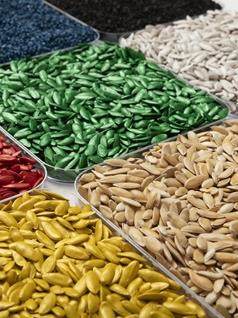Going microplastic-free: lessons from Croda and Incotec’s seed treatment journey
New rules banning microplastics from EU/EEA seed treatments have been in the works for a couple of years and are likely to be finalised by 2023.
Like many, we were initially sceptical. Seed coatings are hard to reengineer and make a relatively low contribution to global microplastics, whilst also offering sustainability benefits by reducing the need for more harmful plant protection products.
But we realised that however small, seeds do contribute to overall microplastic levels, and better alternatives were possible. Furthermore, products containing microplastics do not align with our company’s sustainability goals – goals we know many in our industry share, including our customers.
So, four years ago we started our journey to replace all synthetic polymers in our seed treatments, with some successes already. As the new legislation bites, we hope our experience can be informative to others at the start of their journey.
Our approach to microplastic-free seed treatment
We began by looking across our entire portfolio, product by product, in the context of the proposed directive text. We engaged with customers who were leading the sustainability agenda to understand what changes were needed to meet their needs.
We looked at every product and asked the four questions: is it (a) polymer; (b) water soluble; (c) 100% natural, or (d) biodegradable.
Some were, many were not. For a few we could swap out ingredients quite easily. But many required us to change formulations significantly.
This meant a big change in the way we formulate. In our labs, we played around with a range of chemistries, created new formulations, and applied them to seed.
In our test facilities, we trialled promising formulations to assess the key parameters for seed treatments: adherence of the treatments to seeds, easy flow of coated seeds through equipment, prevention of unnecessary waste, and potentially harmful dust emissions.
These tests were repeated several times to identify the best formulations. Only treatments that meet them all will be accepted by the market.
Within two years we had developed new microplastic-free coatings for corn and sunflowers seeds, and a vegetable seed coating. We are working on other crops including rice and soya which are derivatives of current solutions, as well as oil seed rape, which is more complicated – its smaller size needs high volume of treatment, so needs to be formulated to dry quicker.
Where next on the journey to microplastic-free treatments
The next step is to work with clients to do testing at scale in their facilities. Lab tests can show with 70-80% certainty that the treatments deliver, but to be sure we need testing under weather conditions in climate chambers. After that, seed companies themselves will need to test it first in their in high-speed seed factories for fouling, drying, temperature changes, etc, and then in soil.
This whole process can take 2-4 years, which is why moving well ahead of the legislation was important.
Incotec/Croda have developed expertise on the legislation, as well as on assessing whether products contain microplastics, and developing microplastic-free products. For more information contact marta.dobrowolska-haywood@croda.com.
Whitepaper - A microplastic-free future for seed treatments
